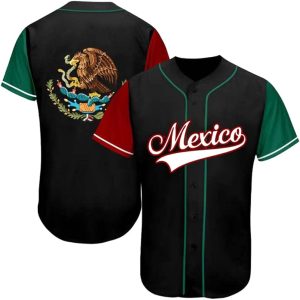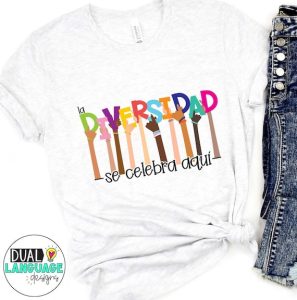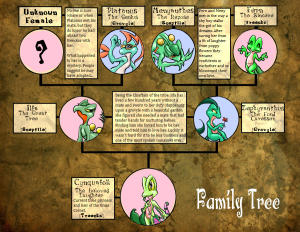Nordic last names are common in Scandinavian countries and often reflect the person’s ancestry or occupation. Nordic last names can be traced back to ancient Norse mythology and history, with some names even dating back hundreds of years.
These surnames have unique characteristics and are an important part of Nordic culture and heritage. They often include suffixes like -son, -sen, -sdottir, or -dottir, indicating “son of” or “daughter of” along with the father’s or mother’s first name. Some common Nordic last names include Johansson, Hansen, and Andersen.
These names have become popular worldwide, and many people with Nordic heritage proudly carry their family name to this day.
Table of Contents
ToggleExploring Nordic Last Names
Origin And Meaning
Nordic last names trace back to Viking ancestry, denoting familial connections and heritage.
Evolution Over Time
Nordic last names have evolved over time, reflecting changes in society and culture.
Historical Significance
The historical significance of Nordic last names spans centuries and offers a fascinating glimpse into the region’s rich cultural heritage. Here, we delve into two key aspects of this significance: the influence of Vikings and the integration of Nordic names into modern culture.
Influence Of Vikings
The Vikings were renowned for their exploration, conquests, and trading throughout the medieval period.
Viking last names often stemmed from personal attributes, occupations, or ancestral roots, reflecting their strong ties to family and community. These names were passed down from generation to generation, creating a lasting legacy.
The impact of the Vikings can be seen in the prevalence of common suffixes such as “-son” (meaning “son of”) and “-sen” (a Scandinavian variant), which can be found in many Nordic last names today. Examples include Johnson, Peterson, and Svensson.
Integration Into Modern Culture
Nordic last names have seamlessly integrated into modern culture, offering a unique connection to the region’s history.
This integration is evident in how many individuals proudly carry their Nordic heritage through their last names. Whether it’s Bjornsson, Andersen, or Jorgensen, these names serve as a reminder of the ancestral roots and family ties that shape an individual’s identity.
In addition to personal connections, Nordic last names have also permeated popular culture. From movies and literature to sports and entertainment, the recognition and celebration of Nordic last names have transcended geographical boundaries.
Moreover, the popularity of Nordic-inspired names for fictional characters and brand names further exemplifies the impact of Nordic culture on a global scale.
Overall, the historical significance of Nordic last names is twofold: the enduring influence of the Vikings and the integration of these names into modern culture. Through their unique origins and cultural relevance, Nordic last names continue to play a vital role in preserving and honoring the region’s remarkable history.
Top Common Nordic Surnames
When it comes to Nordic last names, there are several common surnames that have been prevalent in the region for centuries. Understanding the significance and variations of these names can provide a glimpse into the cultural and historical roots of the Nordic people. In this post, we will explore the top common Nordic surnames, their regional variations, and provide an analysis and interpretation of their significance.
Analysis And Interpretation
Nordic last names often reflect the occupation or familial lineage of an individual. Surnames such as “Andersen” and “Johannsen” indicate the “son of” tradition, while names like “Berg” and “Larsen” may signify geographical features or locations. The rich history of Nordic last names offers a fascinating insight into the heritage and ancestry of those bearing these surnames. These names have stood the test of time, carrying with them a legacy that continues to be cherished by Nordic families today.
Regional Variations
When it comes to regional variations, Nordic last names may differ based on the specific country or area within the Nordic region. For example, in Sweden, you might commonly come across names like “Andersson” and “Larsson”, reflecting the Swedish “son of” tradition. In Finland, surnames such as “Korhonen” and “Virtanen” are prevalent due to historical influences. Understanding these regional variations provides a deeper appreciation for the diversity and unique cultural aspects within the Nordic naming conventions.
Surname Changes And Adaptations
When exploring Nordic last names, it’s fascinating to dive into the topic of surname changes and adaptations. Many factors influence modifications in Nordic surnames, impacting the naming conventions of individuals and families. In the wake of globalization, these adaptations have become more prevalent, highlighting the evolving nature of Nordic last names.
Factors Influencing Modifications
Nordic surnames have undergone modifications due to various factors. These influences include:
- Migration patterns
- Social and cultural changes
- Language evolution
- Marrying into different ethnicities
Impact Of Globalization
The globalization phenomenon has significantly contributed to the alteration of Nordic last names. This impact is evident in the:
- Connection between individuals from different cultures
- Adoption of new customs and traditions
- Integration of diverse naming practices
Female And Gender-neutral Surnames
Nordic last names offer a range of options for those seeking female and gender-neutral surnames. These names reflect the rich cultural heritage of the Nordic region and can be a unique choice for individuals looking to embrace diversity in their naming traditions.
While last names have traditionally been associated with patrilineal ancestry, the Nordic region is known for its progressive approach towards gender equality, even in the realm of surnames. In this section, we will explore the fascinating world of female and gender-neutral surnames in Nordic countries, highlighting the historical context and contemporary trends.
Historical Context
Throughout history, the Nordic region has witnessed a range of naming practices reflecting societal norms and cultural shifts. In the past, women typically inherited their father’s last name, often with the addition of a suffix like “dottir” (daughter) or “sen” (son). This naming convention denoted the individual’s patrilineal connection, but it evolved over time to encompass a more inclusive approach to gender identity.
During the late 19th and early 20th centuries, women in Nordic countries began to challenge traditional gender roles, leading to changes in naming practices. A significant development was the introduction of gender-neutral surnames, allowing individuals to choose last names that did not explicitly indicate their gender. This shift marked a stride towards equality and diverse personal expression, a hallmark of the Nordic ethos.
Contemporary Trends
In recent years, Nordic countries have witnessed a surge in the popularity of gender-neutral surnames, reflecting the modern ideals of equality and free choice. This trend is particularly evident in countries like Sweden and Iceland, where legal provisions now allow individuals to change their last names more easily, without restrictions based on their gender or marital status.
Contemporary naming practices in Nordic countries embrace a wide range of options, allowing individuals to choose a surname that resonates with their identity, regardless of gender. Many individuals opt for nature-inspired surnames, such as “Björnsson” (bear’s son) or “Lindström” (lime tree stream), while others may choose names based on personal passions or family ties.
Moreover, it is not uncommon for couples to create new last names that combine elements from both partners’ original surnames, signifying their equality and shared commitment. This trend reflects the ever-evolving nature of Nordic society, where inclusivity and personal freedom are highly valued.
In conclusion, the adoption of female and gender-neutral surnames in Nordic countries signifies a progressive attitude towards gender equality and personal expression. Through evolving historical contexts and contemporary trends, the Nordic region demonstrates its commitment to embracing diversity and modern ideals.
Preserving Nordic Last Names
Role Of Genealogy
Exploring ancestry helps understand heritage.
Tracking family lineage maintains cultural roots.
Genealogical records unveil past traditions.
Challenges In Retaining Identity
Globalization risks diluting authentic identities.
Mixed marriages impact surname preservation.
Adaptation to modern norms alters traditional customs.
Celebrating Diversity In Nordic Surnames
Exploring the rich tapestry of Nordic last names showcases a vibrant celebration of cultural diversity. From patronymic to toponymic origins, these surnames reflect the region’s unique heritage and ancestry. Embracing Nordic surnames fosters a deeper understanding and appreciation for the rich history they reveal.
Interplay Of Languages
In Nordic last names, the interplay of languages reflects the region’s rich cultural history.
Scandinavian, Finnish, and Sami influences contribute to the vibrant tapestry of surnames.
Symbolism In Naming Conventions
Nordic surnames often bear symbolic meanings, reflecting ancestral pride and traditions.
Nature, family, occupations, and geographical features commonly inspire these symbolic names.
Incorporating elements like mountains, rivers, and animals, these names tell captivating stories of heritage.
Future Trends And Prospects
Nordic last names have a rich history and are deeply rooted in the region’s culture and heritage. This makes them an intriguing subject for examining future trends and prospects. As society evolves and digitalization continues to influence various aspects of life, including naming practices, it’s interesting to consider how this might impact Nordic last names.
Digital Influence On Surname Patterns
The digital age has brought about significant changes in how people interact and communicate. As a result, naming patterns are also being influenced by these digital advancements. The ease of access to information and global connectivity has led to a more diverse and interconnected world.
- Globalization has facilitated cross-cultural relationships and marriages, leading to couples with different cultural backgrounds combining their last names to create unique surname combinations.
- Online Ancestry Platforms allow individuals to trace their family histories and discover long-lost branches of their family tree, often leading to the revival and adoption of ancestral last names.
- Social Media has provided a platform for individuals to express their cultural identity, resulting in a renewed interest in traditional naming practices and ancestral surnames.
Revival Of Traditional Naming Practices
In recent years, there has been a noticeable revival of traditional naming practices in the Nordic region. This resurgence is driven by a desire to reconnect with cultural roots and preserve heritage. As modern society becomes more interconnected, individuals are seeking to maintain ties with their past through their surnames.
- Heritage Preservation is becoming increasingly important, leading families to embrace their traditional last names as a way of honoring their ancestors.
- Cultural Identity plays a significant role in the resurgence of traditional Nordic last names, as individuals strive to maintain a strong connection to their heritage in an increasingly globalized world.
- Legal Recognition of traditional names by governing bodies has paved the way for the official reintroduction of ancestral surnames, providing individuals with the opportunity to reclaim their cultural heritage.
Frequently Asked Questions Of Nordic Last Names
What Are Some Common Nordic Last Names?
Common Nordic last names include Andersen, Jensen, and Hansen. These names are often derived from the father’s first name or occupation.
How Do You Pronounce Nordic Last Names?
Nordic last names are pronounced based on the language they originate from. Utilize online pronunciation guides or ask native speakers for accurate pronunciation.
What Is The Meaning Behind Nordic Last Names?
Nordic last names often carry meanings related to nature, occupations, or familial ties. Understanding the origin of these names can provide insight into family history.
Can Nordic Last Names Be Traced Back To Specific Regions?
Yes, many Nordic last names can be traced back to specific regions or even villages within Nordic countries. Researching the name’s history can provide valuable insights.
Conclusion
Overall, Nordic last names hold a rich cultural heritage and offer a glimpse into the fascinating history of the region. From common surnames like “Jensen” and “Nielsen” to unique ones like “Sigurdsson” and “Ragnarsson,” each name carries its own story and meaning.
Exploring Nordic last names can help individuals connect with their roots, celebrate diversity, and gain a deeper understanding of their ancestry. So whether you have a Nordic last name or simply appreciate the beauty of these names, embracing their significance can be a wonderful way to honor your heritage.

Mother of Two children. I’m a former teacher with a background in child development and a passion for Good parenting. I understand child development and know how to develop activities to help children learn and grow. Spare time, I enjoy spending time with my family, reading, and volunteering in my community. Read More







